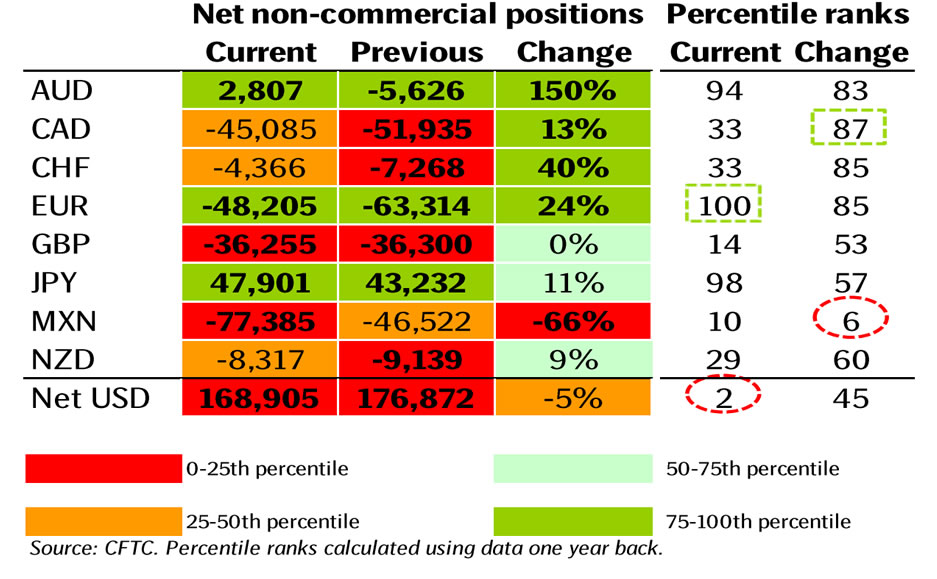Australian Dollar a Hot Favourite with Speculators Once More
The Australian dollar (AUD) has seen its popularity rise against amongst the speculative community.

Confidence in the Australian dollar’s outlook has grown to the extent that it is now as popular amongst speculators as it was back in mid-2015.
Data held in the latest Commitment of Traders report into speculative positioning shows that speculators continue to shed exposure to the US dollar in favour of the Australian dollar and the Japanese yen.
The move confirms a growing trend in the Australian dollar which is now viewed more positively as global commodity prices stabilise. Combined with a steady economy and no headline risks attached, we can see why the Aussie is growing in popularity.
In fact we are seeing the GBP/AUD charging down the 1.90 level again while the AUD/USD has just hit a new two week best.
Speculators have switched into a net long position (2.8K long positions) having been short for 37 weeks since June the 2nd.

“In the past four weeks speculators have been adding long contracts and at the same time reduced short ones; the combination clearly showing speculators’ newfound belief in the currency,” says Karl Steiner at S.E.B, the Swedish bank.
The switch in favour of the Australian dollar comes as speculators are turned off the US dollar.
In fact, speculators are now net short the US dollar against the yen and Aussie.
“For a fourth straight week speculators reduced their aggregated net long USD position. All major currencies were preferred ahead of the USD and only versus the MXN did speculators add to their net long position,” says Steiner.
Australian Dollar Strength to be Tested by Capex Data
With the AUD flying high at present the first real hurdle for the currency comes on Thursday the 25th when Capital Expenditure data are released.
The CAPEX survey will provide an important update on the outlook for business investment. The survey will furnish us with the first look at firms’ investment plans for 2016-17, the fifth estimate for 2015-16, and actual CAPEX spending for Q4 2015.
The focus of this week’s survey will be on firms’ first estimate of non-mining investment intentions for 2016-17," says Daniel Gradwell at ANZ Research, "Despite a sustained run of above-average business conditions, solid balance sheets, and low borrowing costs, non-mining investment has remained sluggish.”
ANZ forecast the fifth estimate for non-mining investment in 2015-16 to show a raw value of AUD66bn. This would imply an 8.3% decline in year average terms – in line with the previous CAPEX survey.
Note though that the impact of a negative number may actually be quite contained.
"In terms of the implications of this soft outlook for non-mining investment, we would note that the RBA has been less concerned by weak business investment recently, as economic growth is increasingly concentrated in the labour-intensive sectors, which are less capital intensive," says Gradwell.
Australian Housing Construction Hits a Peak
Data out thus far has not been inspiring.
On Wednesday it was shown that construction work done declined further in Q4, with ongoing weakness in resources-related engineering construction outweighing solid residential construction activity.
Although most indicators of housing market activity (auction clearance rates, house price growth, credit growth) slowed through the second half of 2015, record volumes of work outstanding continue to support actual construction activity.
"However, this is not expected to continue. Sharp falls in residential building approvals suggest that housing construction is around its peak and is unlikely to post significant further growth through 2016. This lack of additional impetus to GDP growth is a key part of our expectation that the RBA will need to provide additional stimulus to the economy later this year," says Gradwell.




